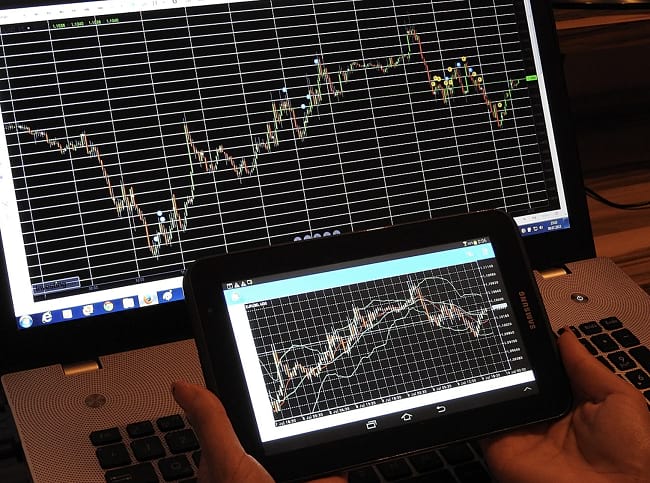Forex trading is all about capitalizing from price fluctuations in the exchange rates between currency pairs. The two currencies in any forex transaction are listed as the base currency and the quote currency. The currency pair indicates how many units of the quote currency are required to purchase 1 unit of the base currency. For example, the GBP/USD currency pair, a.k.a. The Cable (derived from the Transatlantic Cable between the United Kingdom and the United States), indicates how many USD are required for £1. Midway through September 2021, the exchange rate was hovering around 1.3750. This means that £1 can be exchanged for US$1.3750. Note that exchange rates are only correct at the time they are exchanged; forex trading is a dynamic global enterprise with ever-changing rates based on supply and demand considerations.
Heavily Traded Currencies on the Global Stage
In fact, any listed currency pair follows the same protocol. The USD/CAD pair a.k.a. the Loonie, indicates how many Canadian dollars are required to purchase US$1. Midway through September 2021, the USD/CAD exchange rate was 1.2738. This means that US$1 traded at the equivalent of C$1.2738 at the time it was quoted. It’s all about the right numbers. There are major currency pairs, minor currency pairs, and exotic currency pairs. The major currency pairs include the US dollar as one of the currencies in the pair. It can be the quote currency or the counter currency.
As the world’s #1 reserve currency, and the most heavily traded currency of all, the US dollar features prominently in global forex trading. According to industry aficionados, the USD comprises 44.15% of all trading activity in the Forex arena, followed by the EUR in a distant second at 16.14%, the JPY at 8.40%, and the GBP at 6.40%. The average daily trading volume of the greenback is $2.9 trillion, a hefty chunk of change considering the total volume of Forex averages $5 trillion – $6 trillion daily.
An Unlikely Parallel: Volatile Slots Games
Currency trading is a high volatility activity, not dissimilar to 777 Mega Deluxe Slot Game offered at Casino.com. The inherent risks of currency trading can be mitigated to a degree by careful and methodical research into macroeconomic variables driving currency strength or weakness. These include close attention to detail vis-a-vis the Federal Reserve Bank, European Central Bank, or the Bank of England, et al. in terms of interest-rate announcements, macroeconomic projections, and monetary policy assessments.
Currency trading aficionados, like high volatility slots players, get to practice on demo trading accounts before wagering real money on uncertain outcomes. With Forex traders, it’s difficult to ascertain directional movement, given the myriad factors impacting currencies at any given time. GDP, employment data, interest rates, inflation rates, actual performance versus expected performance, and so forth weigh heavily on decision-making processes.
Making Money from Volatility, Liquidity, and Volume Trading
Volatility is a measure of how much whipsaw activity takes place in pricing with Forex, and is typically much lower when you trade the majors. Minor pairs and exotic currency pairs are subject to much higher levels of price volatility, given lower levels of liquidity. On a parallel track, slot machine games with high volatility tend to experience wild swings in payouts, and this form of volatility references the likelihood of losing your bankroll during any given gaming session.
It also has other meanings, notably the size of your payouts – whether big or small – during your slots sessions. The lower the volatility, the more predictable the outcomes, and the smaller the payouts. This would be akin to trading the major currency pairs with predictable and stable exchange rates. When predictability is a feature of Forex trading, it all comes down to volume and leverage to maximize the yield generated from small price movements.
